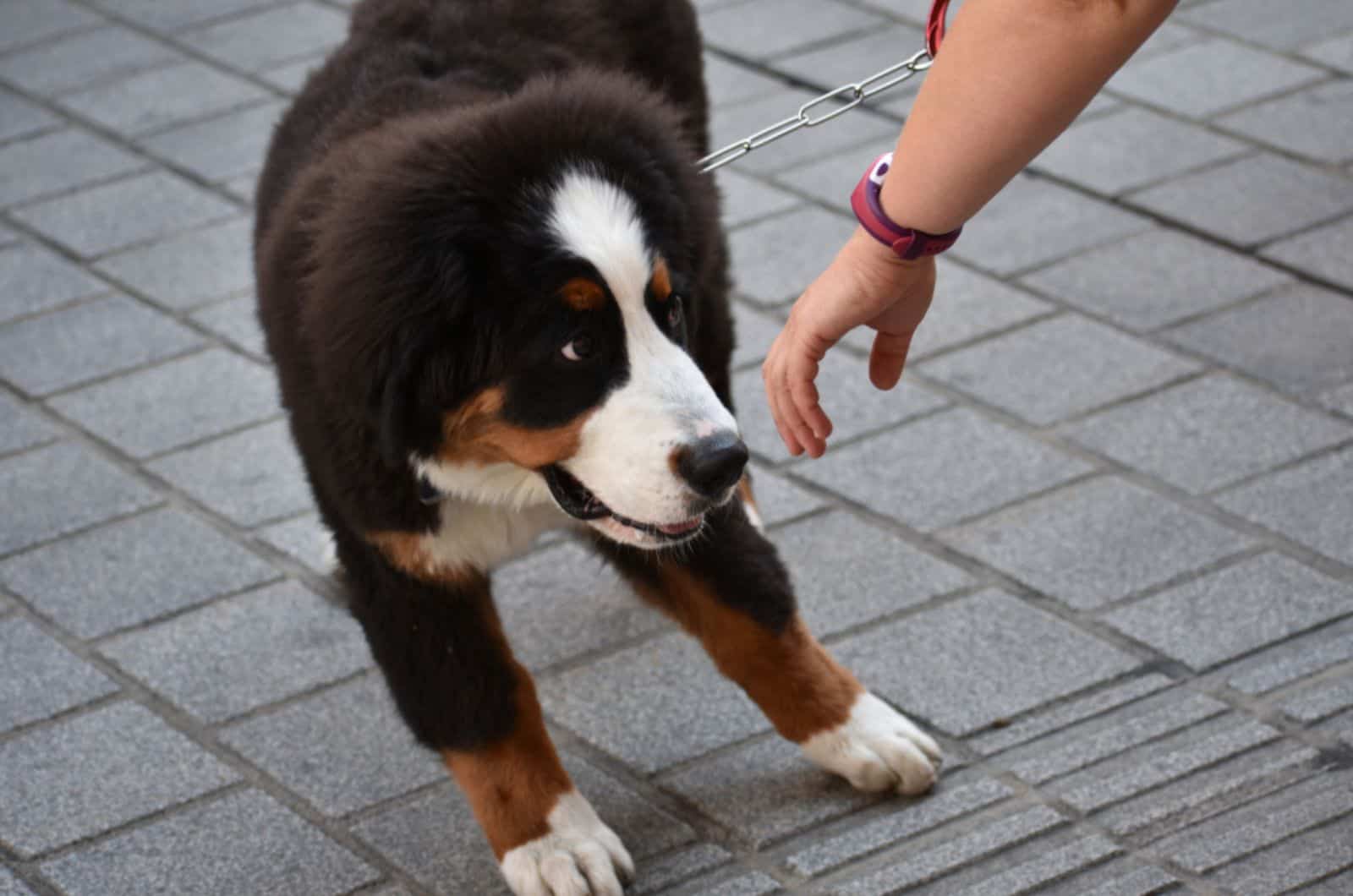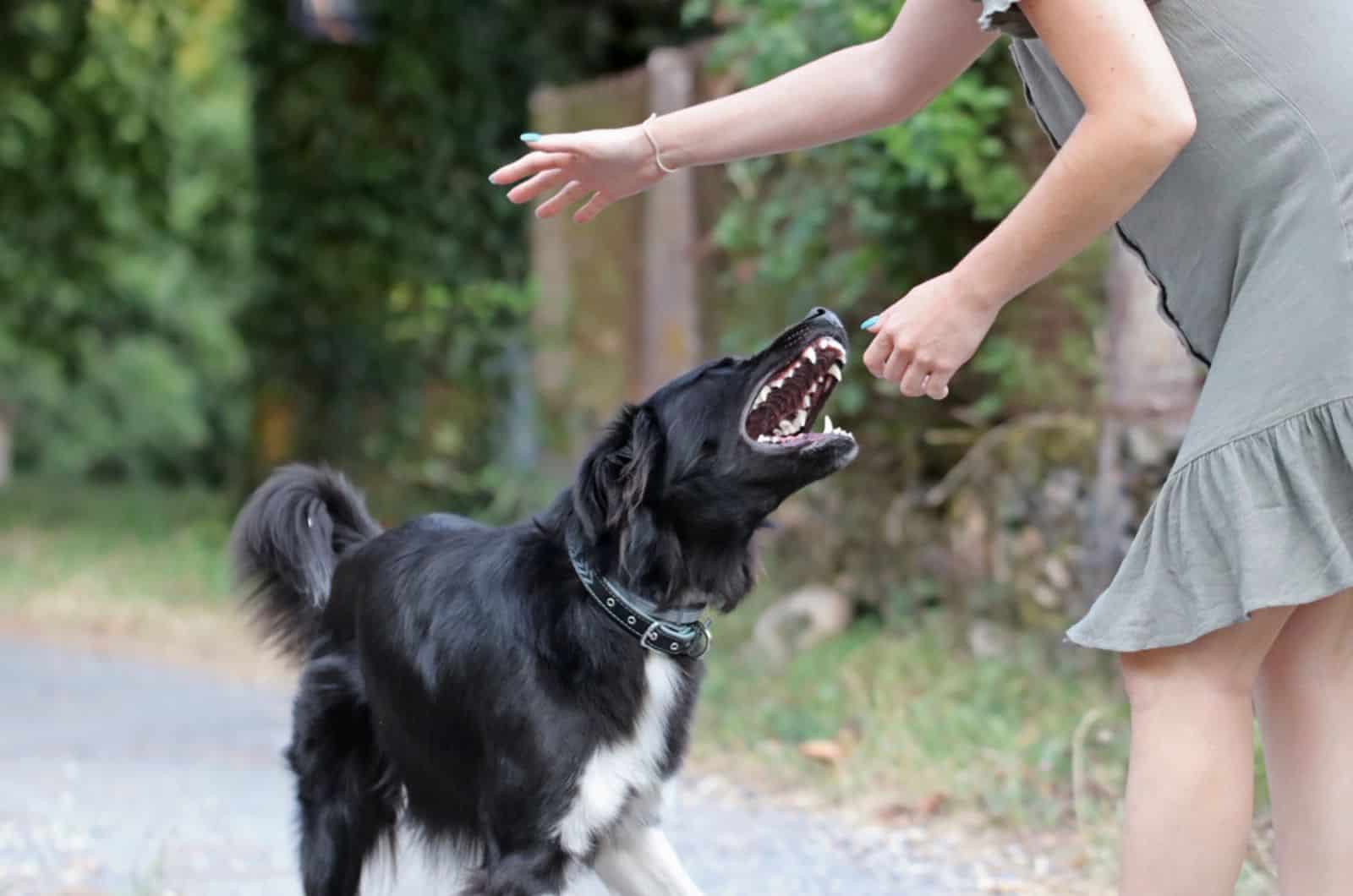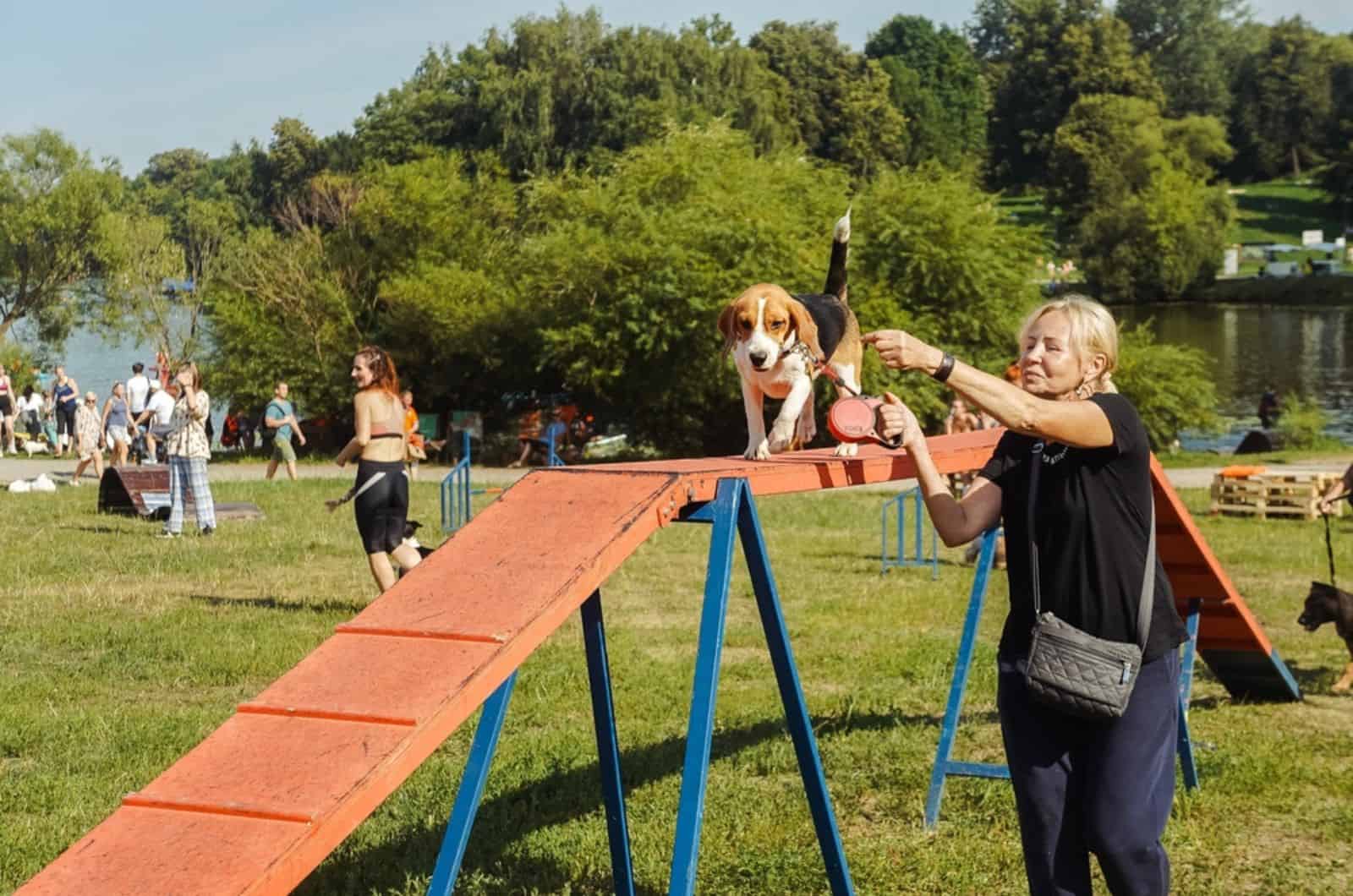Cute dogs, imposing dogs, funny dogs, and all other kinds of dogs can attract the attention of passersby. High-pitched baby talk ensues while they are approaching you. Should you let strangers pet your dog?
Since you are the owner, the decision lies with you. However, you should be aware of certain behaviors that can trigger an otherwise nice dog to not be so nice when someone tries to pet it.
Some conventions and rules from the dog world have to be respected by humans. Today, we will learn about “stranger things” and how they can affect both you and your dog.
It Does Not Matter How Much A Stranger Loves Dogs

This article is for strangers who like approaching other dog owners’ dogs as well, which means knowing your dog does not warrant the assumption that other people’s canines are up for the random pet on the head.
A lot of this topic revolves around personal space. Even with human-loving breeds like the Labrador or Golden Retriever, respecting a dog’s safe area is a must. Giving affection is something that should feel like a reward for the dog.
Random people on the street are not part of the pack, which means their affection and attention does not amount to a great deal. If anything, a stranger walking towards your dog head on can be considered a challenge.
One variable people do not take into consideration is whether the owner is trying to train the dog on the leash. Going in for the pet can ruin hours of progress with their dog, and all to satisfy an individual’s own need to interact with the dog.
Maybe a dog is not socialized enough to handle attempts to be pet. It is stressful and unexpected when unfamiliar people approach you, let alone your dog. Humans more often than not have a frontal approach, towering above the dog’s body.
In the dog world, this means dominance and might trigger an owner’s dog into snapping back at the “petter”, or cause anxiety. All of this does not bode well for an insecure dog’s mental development, which will have repercussions beyond what happens solely at that moment.
Of course, this does not mean you should get rid of your fear-aggressive dog, but guidance on what is the proper way to behave in these situations must be given to every dog. Leaving things for your dog to decide on is a bad habit.
Should you let strangers pet your dog? If you truly know your dog’s affinity towards these actions, as an owner, you should be the judge. For those who are still unsure about how their canine companion feels about this, avoid these types of interactions.
Bite Statistics Reflect Ignorant Dog Ownership

No matter how well you think your dog is trained, without a professional’s confirmation that your dog is ready for any situation, there is always a possibility that your dog might injure a person.
Considering that many of the strangers who approach to pet your dog are children, it can be very dangerous putting the trust in your dog before common sense. Studies have shown that around 1000 people are treated for non-fatal dog bites every day in the United States.
The same study also concluded that the demographic most frequently treated for dog bite-related injuries (non-fatal) were school-aged children. This reflects with how a canine feels when a smaller being closer to its eye level approaches “uninvited”.
Children can often have no boundaries when it comes to showing excitement. Even if your dog is obedience trained, and passed training courses with flying colors, there is no guarantee that it will not have a negative reaction to strangers touching it from a position of dominance.
Tolerating busy streets is normal for a dog. The problems arise when five, ten, or fifteen, unfamiliar humans try to touch you for no apparent reason. There is a reason why service dogs, law enforcement K-9 units, and military dogs, have written “DO NOT PET” on their harnesses.
Deciding it is ok for a child to pet your dog should be done in a controlled manner. Treats from a child’s hand while you closely supervise the interaction can be a good way of explaining to your dog that a child means a tasty reward.
If, for whatever reason, you feel uncomfortable with people of any age touching your four-legged follower, then perhaps a small entertaining piece involving a trick or obedience drill might put a smile on a stranger’s face. Feel free to use our guide on how to teach a dog to shake.
Dog Training Can Make A Big Difference, But Still…

Socializing your dog is a crucial part of integrating it in our human world. Dog parks are a useful tool to teach your puppy how to interact with other dogs, but walks are the one things that improves the bond canines form with their owners.
Letting unfamiliar people interfere with your bonding experience can put the dog’s focus off of you. Most dog owners train their dogs themselves, which means there can be mistakes in the methodology itself.
The pandemic saw a substantial increase in the number of adopted dogs, leading to a growth trend in the dog training industry, according to Allied Market Research. Despite this rise and predicted doubling of the dog training industry’s worth, only six percent of dog owners resort to professionals.
While there is nothing wrong with doing it yourself, experts with decades of experience on the topic have well-developed methods and the necessary tools to provide the best possible training for your canine.
Consistency Is Key
Without guidance on how to prevent and remove undesired behavior, your dog might be confused about how it is expected to behave. If you teach it to pay attention to you at home, but do not apply the rules on a walk, it can be a source of stress for your already dog.
Strangers on the street present an option to focus on, which means you will lose all the progress from previous weeks by allowing them to pet your dog without you allowing it, or connecting it with a reward.
You should always follow a guide on how to socialize aggressive dogs, as there is no room for mistakes. Your level of knowledge on dog training might be very high, but we humans have trouble detaching ourselves from our dogs in an emotional sense.
It is not only a matter of allowing them. Some people will simply go for it without asking, and your demeanor has to project a firm “no”. For most dog owners who are not deep into dog training, or had their dog trained, you should definitely not allow strangers to pet your dog.
Allowing Strangers To Pet Your Dog Can Affect Its Confidence

Keeping the people around your dog safe is only part of the answer. To be a good leader, you have to protect your dog from the people around as well. This responsibility includes being clear in the refusal to allow “free petting”.
Only the professionally-trained dogs that have the near-perfect temperament can have guarantees from experts that they are fit for a certain role. That type of training is available to the public, but is usually costly and time-consuming and depends a lot on your dog.
The amount of training does not necessarily mean your dog is problem-free. It can still be anxious, fearful, insecure, or aggressive in uncontrolled environments. Walking a dog on a leash through torrents of people cannot be called a controlled situation.
Hundreds of voices, traffic noise, other animals, countless scents and visual stimuli can overwhelm your dog. In that state of mind, it might resort to cowering, lunging at people, or even biting them to defend itself from unwanted contact.
Typically, fearful dogs will become refusing to go for walks, avoid socialization, and revert to a flight mode once strangers are introduced to the setting. Aggressive dogs will go into an “alert mode”, eyeing every potential “petter” and even “non-petter” as a danger to its safety.
You Are The Owner, And You Should Act Like It

Although “owning” is not the most delightful verb to use when describing a relationship with your dog, it is legally correct. If the law says you are within your rights to do the best for your dog, then you definitely should.
When training dogs for conformation events, owners know that the judges will probably touch their canine, and that is a specific scenario where you know what is going to happen. Any odd behavior and the dog will be disqualified from the competition.
Luckily, you can say “no” to strangers coming to pet your dog. If they do not ask for permission, it is good practice to stand between them and your dog. Showing dominance to your dog is not just about making it do things, but also showing it how reliable you are as a leader.
Not many people will try to go around you to pet the dog. You are the barrier between what you think your dog needs and what is happening. Reading your dog’s tail or ear position can be an easy way to spot how it feels about the incoming stranger.
If you feel like your dog benefits from interaction with strangers, then by all means allow them to pet it. It is always best for you to decide it, rather than just letting people walk towards you and petting the dog.
Labs and Golden Retrievers are known for their affinity towards stranger affection, and if the pack leader agrees, then no harm is done by allowing a few back scratches or a good ear rub.
Conclusion
Instead of asking should you let strangers pet your dog, the question should be “Does my dog want strangers to pet it?” As the person responsible for everything that happens to your canine companion, you should learn to read your dog’s body language.
If all the signs points to a positive interaction, but you feel like you want to keep moving without any stranger petting your dog, it is fully within your rights. Guide every stranger interaction with your dog in a way you consider fit.
Last, but not least, do not overlook professional trainers and behaviorists if you want your dog to be relaxed around people without the desired results. Expert help is never too expensive if it achieves what you want.















